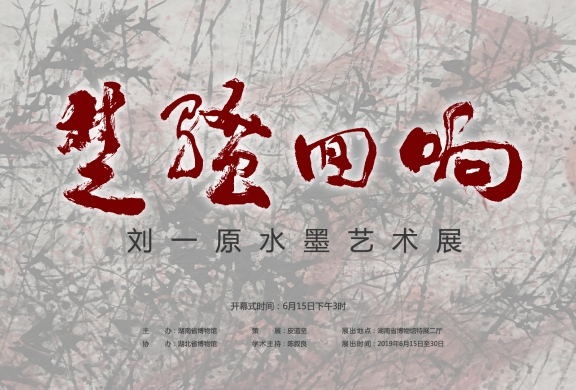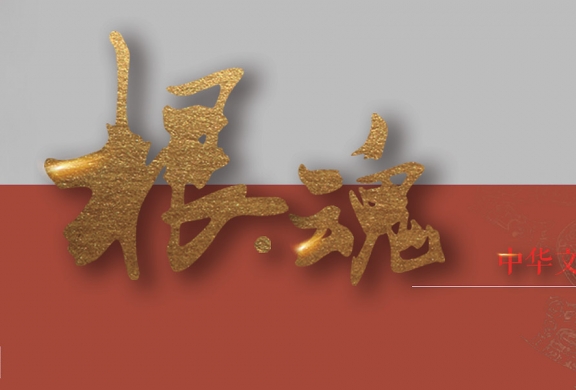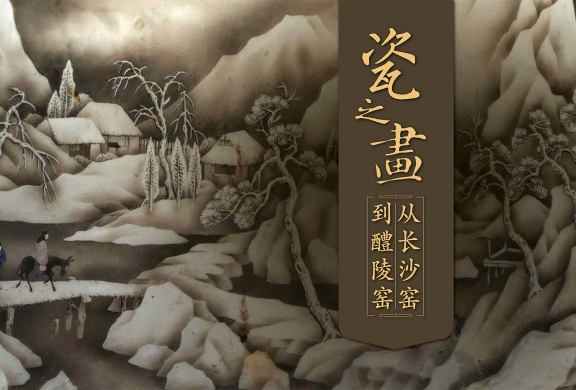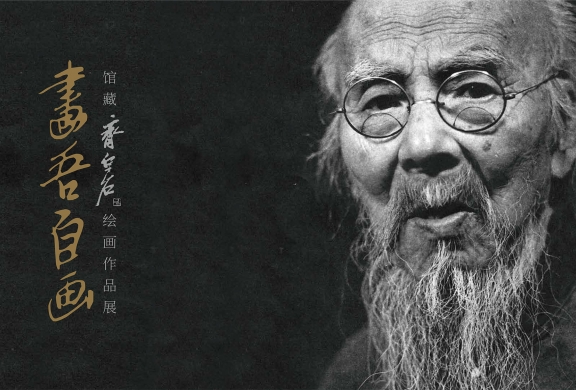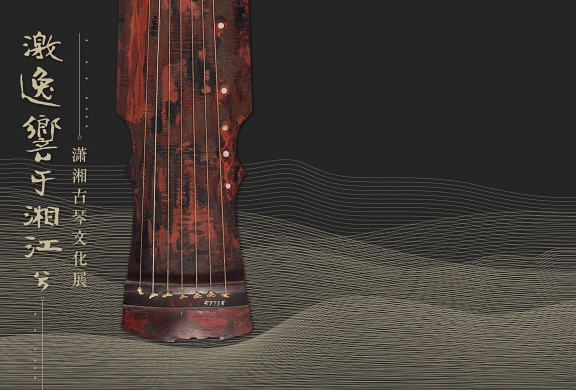Past Exhibitions
Echoes of Lisao——Exhibition of Ink Paintings by Liu YiyuanNo.2 Special Exhibition Hall,1F 2019.06.15 - 2019.06.30 Liu Yiyuan’ creation of modern ink painting began in the 1980s. For the past half a century, he has been creating ink paintings with the keywords of “heart image” (心象), ”dots and lines” (点线) and “feelings of the changes” (感时), providing a profound narrative of the ink arts in the field of Chinese arts. Based on the local life experience, he confronts the present world with a perceived and reflective attitude, taking the advantages of ink arts theories in Chinese traditional painting such as “aesthetic experience with peace of mind” (澄怀味道) and “expressing Taoism by shape” (以形媚道). From the 1980s to the beginning of this century, his works adopted the traditional painting techniques of “creating a circumstance in the mind" (因心造境) and “expressing one’s heart by the brush in hand”(以手运心) since Song and Yuan Dynasty, giving full play to the expression quality of the ink painting. Hence, a sense of compassion for all mankind was integrated into the images and paintings to express multiple understandings about human’s life after “modernity”, which arouses wide resonance. His works has been studied by theorist and critics who focus on the contemporary transformation of Chinese culture. Critics have been revealing the sense of history, reality and characteristics of his creation methodology in his works from different perspectives, which provides fresh starts for the practice of Chinese contemporary ink art. Themed on the “Echoes of Lisao”, this exhibition aims to demonstrate the spiritual elevation of Liu Yiyuan’s art creation as well as the subtle changes of his artistic language during the past decade. The exhibition showcased 35 of his works, among which 25 were created after 2005. In these works, he reoriented his exploration and research on the traditional culture from the Song and Yuan paintings to the more ancient Chu culture that dates back more than 2000 years ago. The sense of compassion in his early works turned into a pursue to poetic nature and connotation, which was related with the traditional Li Sao and its rhyme. It’s not only a modern practice of “landscape expressing Taoism by its shape” (ZongBing), but also a spiritual transcendence and sublimation. The selected works in this exhibition echo with the Chu art in its advocation of life, movement and vitality as well as the artistic spirit of yearning for freedom. For example, strong color contrasts in “Reborn” and “Sound of the Chu Hero” express the spiritual pursuits; flowing lines in “Reminiscence of the Miluo River”, “the Milky Way”, and “the Trace of Time” bear poetic connotations. Hunan and Hubei are the birthplace of Chu culture and therefore boast strong tradition of Chu culture and abundant resources of Chu art. It is highly expected that this exhibition in Hunan Museum can promote our imaginative robust and mettlesome ethos, encourage the creation of modern and contemporary local art in China and exert its positive effect on culture development. |
Root and Soul - Exhibition of Chinese CivilizationNo.1Special Exhibition Hall, 1F 2019.05.18 - 2019.07.18 Chinese civilization, profound and long-lasting, has been recognized by people all over the world. This fact is even further solidified by the boundless artifacts uncovered. Although only 30 sets of exhibits are shown in this exhibition and its selection process was constrained by many obstacles, we still have a chance to catch a glimpse of this magnificent Chinese civilization. The development of Chinese civilization has been multi-dimensional and full of twists and turns, rather than going down a narrow path. the artifacts will be restored to its former glory as we will attempt to place it back in its own timeline. We will also seek out the artifacts’ values and positions within the society by conducting an extensive study into their origin, design and background, thus shining a light on the beauty of the civilization. The Chinese civilization is the only civilization that is still alive and going strong. Although it lies on the Eastern pole of the Eurasian continent, blocked by an immense ocean, high mountains and an endless desert, China has never closed its door to other civilizations. There were exchanges and integrations between grassland culture and farming culture in its north and south; communication and interactions with cultures from ancient Egypt, Greece, Rome, Persia and Arab in the East and the West. In addition, There had also been an influx of colorful religions, such as Buddhism, Zoroastrianism, Nestorianism and Islam. some of foreign cultures have either faded away or assimilated into Chinese civilization. Through constant communication, trade and interaction, civilizations collide, innovate and renew. The exhibits here are witnesses of the cultural exchanges between China and the west. History and reality are inseparable, even more so with civilizations that develops from a natural, primitive state. These artifacts may seem to have no connection with the current China. Actually, it is inextricably tied up with our modern life. It affects our way of thinking and many other aspects. It is in our blood. It is the “root” and “soul” of our culture. “Even now, it is the powerful spiritual strength that promotes reform, opening-up and the socialist modernization movement”.
|
Porcelain Paintings from the Changsha Kiln to the Liling Kiln3rd Floor 2019.05.18 - 2020.05.14 The brown colored porcelains with paintings found in the Nanjing area of the Three Kingdoms period were the earliest porcelains decorated with paintings we have found till now. The painting themes on these porcelains mostly included immortals with wings and auspicious beasts which might be related to local beliefs and funeral customs. However, these special porcelain paintings were lost in the Western Jin Dynasty, and there was no porcelain with painting decorations for the next few hundred years. Porcelain painting reached its first peak until the Changsha Kiln of the Tang Dynasty. The paintings on the porcelains from the Changsha Kiln were mainly themed on flowers and birds, together with other elements including landscapes, figures, buildings, and clouds. It is the first time in the Chinese porcelain history that brown, green and red colors were used to paint on the porcelain, marking that porcelain painting had entered into a colorful era. The royal aristocrats of the Song Dynasty still favored the porcelains without decorations, while paintings decorations were popular elements used by the folk kilns, of which the Cizhou kiln in the northern China and the Jizhou kiln in the southern China stood out. The painting skills from the most part of China were spread to and converged in Jingdezhen (a city in Jiangxi Province, a leading porcelain-manufacturing centre) until the Yuan Dynasty, resulting in the birth of amazing blue-and-white porcelains of Yuan Dynasty. The Ming and Qing Dynasties were the heyday of the development of painted porcelains. In addition to inheriting the previous painting skills, new varieties such as contrasting color, multicolor, pastel, enamel, light-reddish-purple art, under-glazed multicolor emerged one after another, and the paintings themed on flowers, birds, figures, and landscape were becoming more and more exquisite. The paintings on porcelains from royal kilns were precise and rigorous, while those were free and easy in folk kilns. Porcelains become vivid with the decoration of paintings, and paintings are given immortal life because of porcelains. |
Exhibition of Qi Baishi’s Art3rd Floor 2019.05.18 - 2020.05.18 Qi was good at poems, writings, paintings and seals, and especially the achievements of painting is the most representative. It not only promoted the development of literati painting, but also disseminated the profound and unpopular Chinese painting art to the public. In the exhibition, nearly 100 pieces of paintings were selected from the collection of Qi Baishi's works, including flowers, birds, landscapes and figures, covering his early, middle and late paintings. It is hoped that the audience can understand the evolution of Qi Baishi’s painting style and immerse into his maverick and charming art world. |
Exhibition of Guqin Culture in HunanThemed Exhibition Hall, 3F 2019.05.18 - 2022.09.30 Guqin originally known as qin, also called a seven-stringed plucked qin and yaoqin, is one of the most ancient instruments of Chinese nation. In ancient times, it was highly praised by literati as the first of the four arts of qin, chess, calligraphy and painting. In November 2003, UNESCO declared it the "representative of oral and intangible heritage of humanity". Hunan is blessed with a long history of guqin. Shun, a chief of ancient Chinese tribal alliance, played the guqin, intoning “Nanfeng” to rein the country. Guo Mian, a musician in the Southern Song Dynasty, once moved to Hengshan Mountain and composed a song named “Mist and Clouds over Xiao-Xiang River”, which was admired by people for thousands of years. Sages as Zhu Xi, Zhang Shi, Wang Fuzhi and Zuo Zongtang spread feudal code of ethics and purified their souls by qin, adding profound cultural connotation to guqin culture in Hunna. Modern musicians, such as Peng Zhiqing, Yang Zongji, Gu Meigeng, Zha Fuxi and Li Jing were all engaged in guqin study in Hunan, which had a great impact in this field. Hunan Museum has a collection of fifty-three pieces of guqin, which were unearthed or manufactured during the time from Western Han Dynasty to Republic of China, spanning more than two thousand years. These rich heritages are undoubtedly an important part of Chinese guqin culture. “Those who play the guqin by the Xiangjiang River have good moral standards as ancient sages.” In the moonlight of Lushan Mountain and the ripple of Xiangjiang river, guqin melody is in harmony with the heaven and the earth, echoing with the universe. It is hoped that the exhibition can provide an opportunity for people from all walks of life to understand the culture of Xiaoxiang guqin and appreciate its unique charm. |
Exhibition of Artwork Donations from Yan Jialong and Zou Chuan’anNo.2 Special Exhibition Hall,1F 2019.05.10 - 2019.05.30 The exhibition features 43 works of Yan and 63 of Zou, all of which marked the peak of their personal achievements, fully revealing the level of Hunan contemporary art between the latter part of the 20th century and the early 21st century. |

